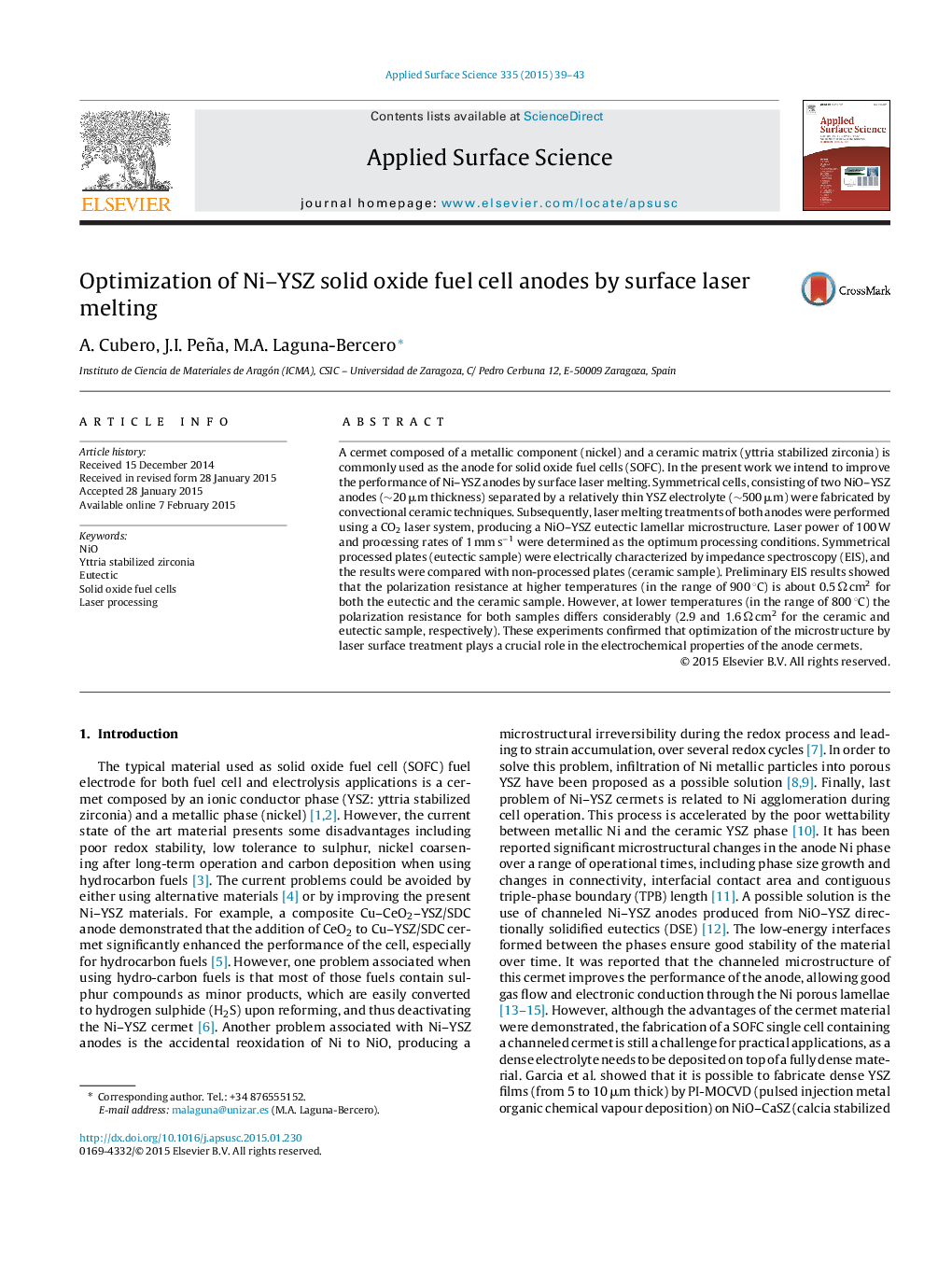| Article ID | Journal | Published Year | Pages | File Type |
|---|---|---|---|---|
| 5355747 | Applied Surface Science | 2015 | 5 Pages |
Abstract
A cermet composed of a metallic component (nickel) and a ceramic matrix (yttria stabilized zirconia) is commonly used as the anode for solid oxide fuel cells (SOFC). In the present work we intend to improve the performance of Ni-YSZ anodes by surface laser melting. Symmetrical cells, consisting of two NiO-YSZ anodes (â¼20 μm thickness) separated by a relatively thin YSZ electrolyte (â¼500 μm) were fabricated by convectional ceramic techniques. Subsequently, laser melting treatments of both anodes were performed using a CO2 laser system, producing a NiO-YSZ eutectic lamellar microstructure. Laser power of 100 W and processing rates of 1 mm sâ1 were determined as the optimum processing conditions. Symmetrical processed plates (eutectic sample) were electrically characterized by impedance spectroscopy (EIS), and the results were compared with non-processed plates (ceramic sample). Preliminary EIS results showed that the polarization resistance at higher temperatures (in the range of 900 °C) is about 0.5 Ω cm2 for both the eutectic and the ceramic sample. However, at lower temperatures (in the range of 800 °C) the polarization resistance for both samples differs considerably (2.9 and 1.6 Ω cm2 for the ceramic and eutectic sample, respectively). These experiments confirmed that optimization of the microstructure by laser surface treatment plays a crucial role in the electrochemical properties of the anode cermets.
Related Topics
Physical Sciences and Engineering
Chemistry
Physical and Theoretical Chemistry
Authors
A. Cubero, J.I. Peña, M.A. Laguna-Bercero,
